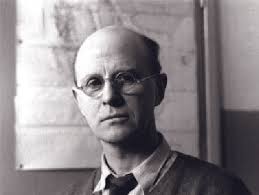Charles Sutherland Elton facts for kids
Quick facts for kids
Charles Sutherland Elton
|
|
|---|---|
 |
|
| Born | 29 March 1900 Manchester, England
|
| Died | 1 May 1991 (aged 91) Oxford, England
|
| Alma mater | Oxford University |
| Known for | Eltonian niche, food chain |
| Spouse(s) | Rosé Montague (1928)(divorced) Edith Joy Scovell (1937) |
| Awards | Linnean Medal (1967) Tyler Prize for Environmental Achievement (1976) Darwin Medal (1970) |
| Scientific career | |
| Fields | Animal ecology, zoology |
| Institutions | Oxford University |
| Doctoral students | Dennis H. Chitty, Francis C. Evans, William W. Murdoch, Michael Smyth |
| Influences | Julian Huxley, Robert Collet, Victor Ernest Shelford, Alexander Carr-Saunders |
Charles Sutherland Elton (born March 29, 1900, died May 1, 1991) was a famous English zoologist and animal ecologist. He is known for helping to create the fields of population and community ecology. He also studied how invasive organisms affect nature.
Contents
Elton's Early Life and Family
Charles Sutherland Elton was born in Manchester, England. His father, Oliver Elton, was a literary scholar. His mother, Letitia Maynard Elton, was a children's writer. Charles had an older brother, Geoffrey, who helped him become interested in studying nature.
In 1937, Charles Elton married the English poet Edith Joy Scovell. They had two children, Catherine and Robert. Before this, he had a short marriage to Rose Montague, which ended in divorce.
Elton's Career and Research
Charles Elton studied at Liverpool College and Oxford University. He graduated from Oxford in 1922 with a degree in zoology. He spent his entire career at Oxford University. His main goal was to turn natural history into a real science called ecology. He wanted to use scientific methods to study animals in their natural homes and how they interact with their environment.
Arctic Expeditions and Animal Populations
In 1921, while still a student, Elton joined Julian Huxley on a trip to Spitsbergen in the Arctic. There, he studied Arctic animals. He went on three more Arctic trips in 1923, 1924, and 1930. His experiences in the Arctic led him to work with the Hudson's Bay Company from 1926 to 1931. He studied how the populations of animals important to the fur trade changed over time. Later, he did similar studies on mouse and vole populations in Britain. He also spent many years doing research in Wytham Woods near Oxford.
Influences on Elton's Work
Several scientists influenced Elton's early career.
- Alexander Carr-Saunders wrote about how human overpopulation affects plants and animals. Elton later applied these ideas to animal populations.
- Victor Ernest Shelford emphasized studying animals in their natural environments. He also linked the ecology of plants to that of animals.
- Gordon Hewitt's book on Canadian wildlife helped Elton understand the population cycles of animals like the Canadian lynx and snowshoe hare. This deepened his knowledge of how Arctic animal populations change.
Establishing the Bureau of Animal Population
In 1932, Elton started the Bureau of Animal Population at Oxford. This center collected information on how animal populations changed. In the same year, the Journal of Animal Ecology was created, with Elton as its first editor.
In 1936, he became a reader in animal ecology at Oxford University. During World War II, Elton's Bureau helped the government find ways to control rats, mice, and rabbits. After the war, he spent 20 years studying animals and their relationships on Oxford University's Wytham estate. He looked at animals in meadows, woods, and water. After he retired, he also did some studies in tropical America.
Elton was very interested in nature conservation. He helped create the Nature Conservancy Council in 1949. He was elected a Fellow of the Royal Society in 1953 and received the society's Darwin Medal in 1970.
Elton's Important Ideas
Understanding Ecosystems
In 1927, Elton published his famous book, Animal Ecology. In this book, he explained key ideas about how animals behave and live.
- Food chains: He described how different animals eat each other, forming a chain.
- Ecological niche: This is an animal's "job" or role in its environment.
- Pyramid of numbers: He showed how the number of animals decreases as you go up the food chain. For example, there are many plants, fewer plant-eaters, and even fewer meat-eaters.
- Food cycle: He explained how all parts of an ecosystem are connected through what they eat.
- Trophic levels: These are the different feeding levels in an ecosystem (like producers, primary consumers, secondary consumers).
Elton was also the first to talk about the importance of population cycles. He showed how predators can affect their prey, which then creates these cycles.
The Eltonian Niche
Elton's idea of the Eltonian niche describes an organism's role in its trophic web (what it eats, what eats it). This is different from another scientist, Joseph Grinnell, who focused more on the environment an animal needs to survive. However, many experts now see similarities between their ideas.
The Dangers of Invasive Species
After World War II, Elton became very worried about how invasive species affect natural ecosystems. His 1958 book, The Ecology of Invasions by Animals and Plants, started a whole new area of study called invasion ecology.
This book was the first to warn about the harmful effects of invasive species. It explained how these species can damage an ecosystem.
- The first part of the book looked at how invaders arrive in new environments.
- The second part discussed the competition between invasive species and native animals. Sometimes, invaders enter places where no other species fills their specific role.
- The final part of the book talked about the importance of nature conservation to protect the variety of species in an ecosystem.
See also
 In Spanish: Charles Sutherland Elton para niños
In Spanish: Charles Sutherland Elton para niños

